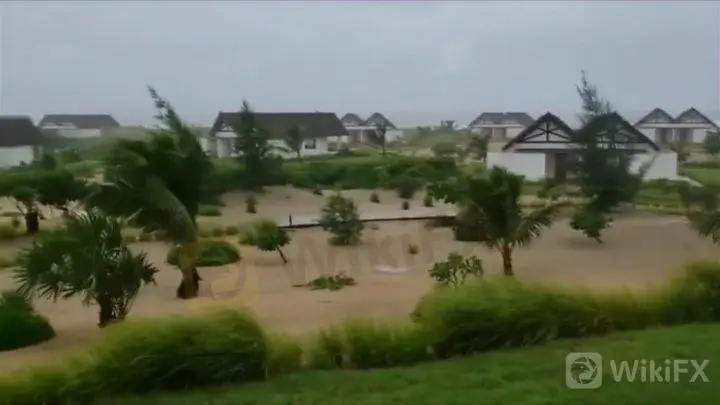简体中文
繁體中文
English
Pусский
日本語
ภาษาไทย
Tiếng Việt
Bahasa Indonesia
Español
हिन्दी
Filippiiniläinen
Français
Deutsch
Português
Türkçe
한국어
العربية
Cyclone Kenneth: Flooding feared as heavy rains hit Mozambique
Abstract:Media playback is unsupported on your device Media captionEyewitness captures moment Kenneth hits

Media playback is unsupported on your device
Media captionEyewitness captures moment Kenneth hits northern Mozambique
A powerful cyclone smashed into Mozambique on Thursday, barely a month after a previous cyclone killed hundreds and devastated large areas.
Cyclone Kenneth hit with winds of 220km/h (140mph), flattening thousands of homes flooding low-lying areas.
The storm was then downgraded as winds fell but heavy rains followed and are expected to last for days to come.
Mozambique was still recovering from Cyclone Idai, which killed more than 900 across three countries in March.
One person was reported dead in Mozambique after being crushed by a falling coconut tree. The cyclone had already killed three people on the island nation of Comoros.
What's the latest?
Winds eased on Friday, but France's meteorological agency said 600-800mm of rain was expected to land on Mozambique over coming days.
Aid agencies have raised concerns about the effect of the coming rain on communities prone to flooding and landslides.
The level of rainfall expected is nearly double the 10-day accumulated rainfall that caused devastating flooding in the port city of Beira, further south, during Cyclone Idai.
Africa Live: More on this and other stories
Cyclone Idai: What the aftermath looks like
How prepared was southern Africa for Idai?
The UN's World Food Programme said it was working on an “emergency preparedness plan” with the Mozambican government and other humanitarian groups.
Mozambique's National Institute of Disaster Management (INGC) said 30,000 people had been evacuated from affected areas, and reports from northern Mozambique said many homes had collapsed and the provincial capital of Pemba had lost its power supply.
Kenneth made landfall on Mozambique's northern province of Cabo Delgado on Thursday evening, with wind speeds equivalent to a category four hurricane. Communications with the affected areas were disrupted, obscuring the full extent of the damage.
There is no previous record of hurricane-force systems ever hitting the region so far north before, according to a BBC Weather analysis.
Thousands remain away from their homes after compulsory evacuation procedures put into place by authorities.
What is the affected area like?
Cabo Delgado province is not as densely populated as the area hit by Cyclone Idai, and there is apparently more high ground there.
That, in addition to warnings by authorities ahead of the storm, could significantly stem losses compared with Cyclone Idai.
But reports said many thousands of homes had been flattened by the winds, and the area has been hit by Islamist violence in recent months, which could complicate humanitarian operations.
Thousands of people had already fled their homes to seek shelter from violence in camps for displaced people.
How ruby smugglers nurtured jihadists in Mozambique
What about other countries in the region?
Comoros is still reeling from damage caused by the cyclone, which battered the islands with high winds and heavy rains. The winds have caused widespread power outages and damage to homes.
In some southern areas of neighbouring Tanzania, authorities have ordered schools and businesses to close.
Image copyrightGetty ImagesImage caption Cyclone Kenneth has already devastated areas of the island nation of Comoros
Residents in the southern Tanzanian town of Mtwara were earlier told to seek higher ground and shelter, but that warning was stood down.
Hurricanes, typhoons and cyclones explained
The International Federation of Red Cross and Red Crescent Societies shared images of the damage on social media. In a tweet, the group confirmed it had volunteers on the ground assisting communities.
Skip Twitter post by @IFRCAfrica
Devastating images from #Comoros following #CyloneKenneth.
Homes and roads are damaged and destroyed, telephone poles and trees are down. Red Crescent volunteers are supporting the urgent needs of communities, providing first aid and assessing needs on the ground. pic.twitter.com/Fl0t5C3vh1
— IFRC Africa (@IFRCAfrica) April 25, 2019
Report
End of Twitter post by @IFRCAfrica
Despite Zimbabwe being further inland, officials there say they are also putting their disaster management agencies on alert.
“Drawing lessons from Cyclone Idai we cannot take chances any more,” said Department of Civil Protection director Nathan Nkomo.
Disclaimer:
The views in this article only represent the author's personal views, and do not constitute investment advice on this platform. This platform does not guarantee the accuracy, completeness and timeliness of the information in the article, and will not be liable for any loss caused by the use of or reliance on the information in the article.
WikiFX Broker
Latest News
Will Gold Break $2,625 Amid Fed Caution and Geopolitical Risks?
Vietnamese Police Bust $1.2 Million Crypto Fraud Case
WikiEXPO Global Expert Interview: Loretta Joseph——Unlock the forefront of digital finance
XTB Receives Licenses to Operate in Indonesia & UAE
SEBI Bans Big "Finfluencers for Misleading Investors"
WikiFX New Year Bash: Chance to Win 70 USDT
ECB Targets 2% Inflation as Medium-Term Goal
New Year, New Surge: Will Oil Prices Keep Rising?
WikiFX Review: Is HYCM still reliable in 2024?
Will Gold Shine Brighter in 2025?
Currency Calculator






